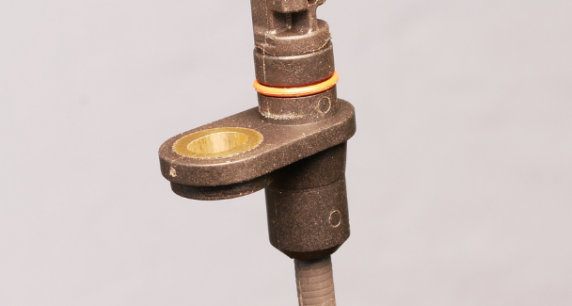What Is Brake Switch?

WHAT IS A BRAKE SWITCH AND WHAT DOES IT DO?
The purpose of the brake switch, sometimes referred to as the brake sensor, brake switch, or brake light switch, is to determine when the brake is being applied. The electronic control unit receives a signal that the brake has been applied when the driver closes the connections on the brake switch. They are spring-loaded switches located in the mechanism’s upper section.
Brake Pedal Position Sensor In some cars, this component appears as two distinct switches.
WHAT DOES THE BRAKE SWITCH DO? HOW DOES IT WORK?
The brake pedal switch is a two-position electric switch that is spring-loaded. There are two operational states: ON and OFF, which produce a signal indicating whether the pedal is pressed or not. The switch’s signal is delivered to the ECU.
Actually, the brake switch is a straightforward electric switch with contact terminals and a spring that activates it to transmit a signal to the circuit. When the brake pedal is depressed, a spring inside the sensor forces the contact terminals into contact. The upward force of the brake pedal pushes the brake switch’s spring back when the foot is lifted off of it, opening the connections and cutting off the signal.
WHEN THE BRAKE PEDAL IS PRESSED, THE FOLLOWING OPERATIONS ARE PERFORMED ON THE CAR WITH THE SIGNAL COMING FROM THE BRAKE SENSOR;
- Turning on the brake lights,
- Disabling cruise control,
- To provide the cut-off (fuel cutting) process in deceleration,
- To operate the emergency brake, assist system (BAS-EBA).
- In vehicles with automatic transmission, to send the signal necessary to move the gear lever to the P and N positions.

BRAKE PEDAL POSITION SENSOR SIGNAL USED FOR DIESEL VEHICLES (COMMON RAIL FUEL SYSTEM)

*Turn on the brake light
*Adjustment of engine idle speed and injection amount.
*Adjusting the injection when braking and shifting at idle.
*To deactivate the cruise control system in operation.
*For logical verification of the correct operation of the accelerator pedal position sensor. Since both the accelerator and the brake will not be pressed at the same time, this is how the accelerator pedal position sensor works properly. If the accelerator pedal position sensor fails, the ECU will cut off fuel when the brake is applied. If the switch fails, the amount of fuel and engine power is reduced. In some diesel vehicles, when the gas is pressed first and then the brake is pressed, the ecu will slightly increase the idle speed of the engine.
*Brake light switch
*Two as brake pedal position sensors.

HOW TO DETECT BRAKE SWITCH FAILURE? WHAT ARE THE SYMPTOMS?
When the brake pedal switch (brake pedal switch) malfunctions, an OBD error code is produced and recorded. The simplest explanation for this is that if the brake switch malfunctions, the car’s brake (stop) lamps will either turn on constantly or not at all. The engine control unit slows fuel injection, which decreases engine traction, when the brake switch (sensor) malfunctions. There is no functioning cruise control system.
Additionally, in vehicles with automatic transmissions, the gear is locked when the brake switch malfunctions. In automatic vehicles, the park (“P”) and neutral (“N”) positions of the gear selector are only accessible by depressing the brake pedal.
If the brake switch is faulty, the control unit cannot detect that the brake pedal is pressed and locks the gear, remaining in whatever position it is currently in. To resolve this fault, it is necessary to open the lower part of the gearshift and lower the lock lever so that the gearshift is released. Of course, if the brake switch is faulty, it must be repaired.
WHY DOES THE BRAKE SWITCH FAIL?
One of the most common brake switch failures is a brake switch dislodgement. When the brake switch is displaced, it is no longer affected by the movement of the brake pedal. Since the brake pedal does not apply pressure to the spring-operated brake switch, the brake lights will come on constantly, as if you are constantly pressing the brake. In this case, it is necessary to insert the brake switch to the place where it comes out and fix it. Apart from this, brake switch connectors and connection cables; It may have caused a malfunction due to reasons such as loosening, corrosion, oxidation, lubrication-contamination, rupture, short-circuiting.
WHERE IS THE BRAKE SWITCH? HOW TO CHANGE?
On the brake pedal is where you’ll find the brake switch. It is attached to the underside of the brake pedal in contact with it at the connection point. Leaning over the floor mat, you must gaze up the brake pedal in order to locate the brake sensor. The brake switch can be screwed into its housing or clipped into place. The replacement brake switch with the proper specification is fitted into the socket and seated after the old brake switch has been removed from its location and its socket has been removed.



